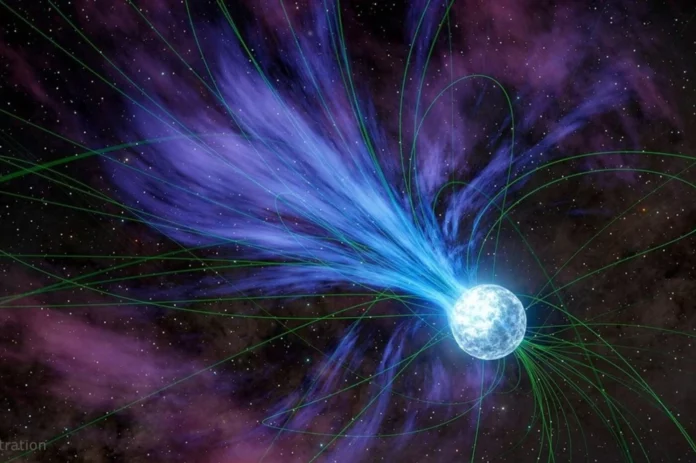You may owe the golden necklace around your neck to a moody, long-dead star from the Universe’s distant past. According to a new study, magnetars – a rare type of neutron star – may have created some of the first heavy elements in the universe, based on evidence found among data from 20 years ago.
The data comes from a magnetar flare in 2004 that released huge amounts of energy into space. Such flares occur when a magnetar’s crust ruptures during a “stellar earthquake,” releasing high-energy radiation. The European Space Agency’s International Gamma-ray Astrophysics Laboratory (INTEGRAL, no longer in operation) made the discovery by recording a mysterious gamma-ray signal from the event. But according to a new group of researchers, it is very similar to the fingerprint of heavy element formation.
The team, which includes experts from Columbia University and Louisiana State University, carefully studied the radiation from the giant flares as a potential indicator of the formation of heavy element atoms from other atoms, a process called nucleosynthesis. The results of the study, published in the journal The Astrophysical Journal Letters, indicate that magnetars may be cosmic factories of heavy elements such as gold.
“This is an answer to one of the questions of the century and solves a mystery using archival data that has been all but forgotten,” said Eric Burns, an astrophysicist at LSU and co-author of the paper, in a NASA press release.
The leading theory about the source of gold, platinum, and uranium points to neutron star mergers – violent collisions between neutron stars that eject atoms into space. But these events are relatively rare and occur at the end of cosmic history. Magnetars, on the other hand, are ancient – and their outbursts may explain how these heavy elements appeared so early.
A team led by Columbia University postdoctoral fellow Anirudh Patel ran models showing how the rapid neutron capture process (or “r-process”) after a magnetar flare could have created the heavy elements. When they checked the old gamma-ray data, they found a signal that matched almost perfectly – a needle in a haystack of data from 2004.
“I didn’t think about anything else for the next week or two,” says Patel. “It’s really cool to think about how some of the things on my phone or laptop were created during this extreme explosion in the history of our galaxy.”
The team’s findings may be confirmed by NASA’s upcoming Compton Spectrometer and Imager (COSI) mission, which will launch in 2027. COSI will study energy phenomena in space, such as (surprise, surprise) giant flares from magnetars. COSI will also be able to identify the individual elements produced by these events, and thus reveal whether those brilliant sparkles from highly magnetized stars are really gold.









